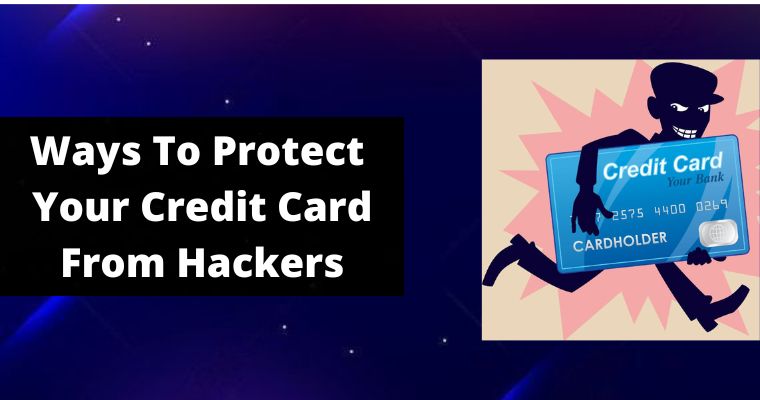A credit card scam or fraud is also a type of identity theft that occurs when your account is used for illegal deals or transactions.
Although some major card companies offer zero liability on fraudulent transactions, it is your duty to be on the lookout for scams & report doubtful transactions as soon as possible.
There’s no perfect strategy that provides you full credit card fraud protection, but since some daily actions can enhance your fraud risk, it’s worth your time to learn how to practice credit card security.
Table of Contents
What is Credit Card Fraud?
Credit card fraud is a type of scam wherein unauthorized transactions are made using someone else’s credit card details.
Common types of credit card scams include skimming, where fraudsters use devices to capture card information from legitimate transactions, and phishing, where individuals are tricked into providing their card details through fraudulent emails or websites.
Another method is through overcharge scams, where individuals receive fake notifications claiming their card has been overcharged and are prompted to provide personal information to rectify the issue.
Credit Card Fraud Statistics
- Largest U.S. data breaches exposing credit card information include Capital One in 2019 affecting 106 million accounts and Equifax in 2017 affecting 147 million accounts.
- Americans ages 30 to 39 reported the most incidents of credit card fraud in 2021 and Individuals aged 40-49 reported the largest total loss to credit card fraud in 2022 ($841 million).
- Rhode Island had the highest per capita rate of identity theft reports in 2021.
- Over 389,000 reports of credit card fraud were made to the FTC in 2021.
- Projection for total losses due to payment card fraud from 2021-2023 is $408.50 billion.
- Losses attributed to credit cards totaled $181 million in 2021, above debit cards but below gift cards and reload cards.
- In 2021, the Federal Trade Commission received nearly 390,000 reports of credit card fraud in the U.S.
- U.S. losses from card fraud are forecasted to total $165.1 billion over the next 10 years.
- Total value of credit card fraud in 2022 was $219 million, marking a 21% increase from the previous year.
- Annual global fraud losses for credit and debit cards reached $34.36 billion in 2022.
- U.S. share of global payment card fraud losses is 38.83%.
- Individuals aged 80 and older experienced the highest median loss of $1,500 per credit card fraud report.
- Delaware had the most credit card fraud per victim and per capita in 2022.
- Card-not-present fraud accounted for an estimated $5.72 billion in U.S. losses in 2022.
- There were over 1,800 data breaches affecting 422 million victims in 2022.
- U.S. merchant losses from online fraud in 2022 cost $3.75 for each dollar lost, a record high.
- Credit card fraud in the US will reach $12.5 billion by 2025.
- The Nilson Report predicts global fraud losses related to payment cards will reach $47.22 billion in 2031.
As we know, during a crisis, fraud increases. The criminal is hoping to catch you in a sensitive moment. You become easy prey for them.
Credit cards are excellent tools for making online purchases and transactions. It gives you convenience but at the same time, it also involves many risks.
And today we are going to give you some tips to deal with these risks, so keep reading and make your credit card safe.
These tips can help you to complete your credit card online transactions safely. Sometimes, just being careful what to look for can help you make better choices and prevent credit card fraud. Let’s take a look at the top 15 ways to protect your credit card from hackers:
15 Ways to Protect Your Credit Card from Being Hacked
1. Always Try To User Secure Connection and a Private device
Vicious cybercriminals search for information on public Wi-Fi systems and steal your information as soon as they get the chance.
This happens when you connect to a public Wi-Fi and do a transaction or shopping with a credit card, they are always ready to steal your information.
That’s why, always keep in mind, never share any personal information or credit card details by connecting to any public Wi-Fi.
Using your laptop or tablet may prove to be a good option but it is not a completely safe option as public Wi-Fi networks can steal personal information as well as your credit card information.
Keep in mind that you only need to shop online with a personal device and a private Wi-Fi connection. You can use a VPN that can encrypt your data.
2. Always Place a Fraud Alert
A different and less drastic step to block your credit is to place a fraud alert on your credit profile with the credit agency. A fraud alert can defend your credit history from illegal access for one year, after which it can be renewed.
A fraud alert won’t totally lock down your credit reports the method that a credit freeze does. But it does need creditors & lenders to take the further step of verifying your identity before allowing new lines of credit with your name.
3. Focus on Credit Card Security From The Start
Whenever your new card arrives, immediately after activating it, sign the back of the new card. Also, you have to follow all the security instructions provided by the bank like turning on activity alerts, setting your card limit, etc.
Keep in mind to generate a strong password whenever you create a password for your credit card, keeping it separate from your other passwords.
Never use a similar password for your bank account and other sites and if your bank has multifactor authentication If the facility is provided, then make sure to take benefit of it.
If your accounts require a PIN, don’t forget to pick a number that you may use for other works or that is unique to you, such as your mobile number or vehicle number.
4. Look Out For Your Credit Card Receipts
Note if there is additional space showing on your receiving, you may have to draw a line through it so that no one can write the extra number. And don’t misuse your credit card.
It is also an excellent thought to check your receipts received on your account to successfully identify potentially counterfeit transactions.
Never throw any old receipts during credit card usage; it can be useful to you in case of any kind of fraud.
5. Never Reuse Your Major Email Password
A hacker who has cracked your primary email password has the access to your [virtual] kingdom. Passwords from the additional sites you visit can be reset via your email account.
A criminal can search through your emails and find a jewels trove of personal data: from banking to passport details, counting your date of birth, all of which make possible ID fraud. Identity theft is projected to cost the UK almost £2bn a year.
6. Always Verify Your Merchant
Always be careful when looking to shop online, check for websites followed by “https” in their address bar (“s” is for “secure”) as well as whether you have a green lock icon on their website;
Along with this, you also have to make sure that the URL includes the right company name you are willing to shop or transact on and not a close-but-not-correct version. Also note that even on a protected site, share your data only if you know how it will be used.
7. Try To Type For Every Transaction
Never let your credit card number be stored on a shopping website. It’s right that you could be attentive to credit card fraud avoidance and still be a victim of fraud. But by doing the whole thing you can thwart it, you will have reduced your possibility quite a bit.
8. Add a Security Layer
Always try to use payment services like PayUMoney, PayPal, Apple Pay, or Android Pay to keep your card number out of direct contact with a business, so that if a merchant gets hacked, it can take your credit. Card details and your personal information cannot be leaked.
A PIN is an additional layer of security to keep your credit card uses safe. Make sure that your PIN is not too clear and simple to guess. Changing your PIN after every 6 months is an excellent way to make your credit card less vulnerable to fraud.
9. Only Use Trustworthy Shopping Sites
Often, fake sites are set up to collect credit card information. This website looks exactly like the original websites, when you shop online always shop from trusted online merchants.
Keep in mind, never try to go to any website by clicking on an email link as this link may take you to fraudulently established websites and steal your personal information.
Always type the URL of the website in the Internet browser to go to the original and correct website.
It is better if you do not even use copy-paste. If you find anything suspicious on a website, check it again. If possible, before using your credit card on that website, please check the reviews about that website.
10. Always Use Two-Factor Authentication.
2FA can be a great option and you must use 2FA on your credit card account because with 2FA when you log in to a financial account, a one-time code text or voice message code is sent to your mobile goes.
This helps to ensure that the account holder is the one who is logging on. Apart from this, some people are also starting to use Face ID, but right now this option is not that effective.
11. Secure your PC with Up-to-date Firewall Protection or Antivirus
Make sure your PCs and other devices are installed with a new and reliable antivirus program that protects you from bad guys online.
Apart from this, it can also protect you from upcoming cyber attacks, so keep in mind that you have to install the latest software on your computer or laptop or other devices.
12. Keep an Eye on Your Mobile and PC Security Setting
One thing you have to keep in mind is to confirm the security settings of your PC and another device from time to time. Sometimes we ignore such small things, but in the long run, it can become a huge problem.
There have been cases where players have taken benefit of gaps in the security system of browsers and operating systems to get sensitive information.
- Schedule routine maintenance
- Keeping your credit card details protected needs effort & maintenance, including:
- Updating applications, browsers, firewalls & anti-virus software routinely or manually.
- Use strong and tough passwords & changing them frequently on credit card issuers’ & merchants’ platforms.
- Setting aside time to review credit card reports for illegal transactions & disputing fraudulent charges.
13. Never Save Your Credit Card Details Online
Yes, for a few people it will become very tough but you have to stop, find your credit card & type in the number. Even with the seller you believe, a data breach can happen, so it’s not an excellent idea to store your account details on a website.
But if you can manage typing in your card account number every time, it’s an effective way to reduce your fraud risk.
You might be tempted to save your credit card information for a modified shopping practice on your favorite websites, but this can put you at a high risk of identity theft.
It’s protected to fill in the credit card details each time you make a purchase, no matter how awkward the whole process is.
14. Use a Virtual Credit Card Number Online
This feature isn’t presented by all issuers, but if your bank does, take benefit of virtual numbers. Here’s how it works: Through your issuer’s application, you can ask for a virtual credit card number to utilize online.
You’ll get an exclusive virtual account number to make a buy in place of your actual credit card number.
As your chip credit card doesn’t provide additional protection online, a virtual credit card number helps improve credit card fraud protection. If the retailer suffers a breach, your real credit card number is protected.
15. Your Last Step For Credit Card Protection
Check your online accounts many times a week. Look for signs of fake purchases and report them right away. If you get fraud early, you’ll go a long way toward reducing the financial loss.



